Was This Hidden Closet Part of the Underground Railroad in Brooklyn?
Get an exclusive look inside the Lott House, one of the oldest buildings in Brooklyn!


The Golden Age of Aviation is popularly described as the years after World War I and up until World War II. It was the era when the popular biplane, with its wings of wood-frame and fabric, was replaced by metal structures with bigger engines and faster speeds. Like antique automobiles, these early planes are the darlings of collectors who love the rarified experience of flying in an open cockpit. Locally, you can see several of these models at the Bayport Aerodrome Society, a living museum housed at the Bayport Aerodrome in Long Island. The Aerodrome itself is an active airport for small private planes, just five miles from MacArthur Airport.
Housing 44 antique planes built before 1955, the museum is open to the public every Sunday from 11 a.m. to 4 p.m. Most of these privately owned planes still fly, and if you visit on a weather-friendly day, you may catch one taking off or landing on the 2,700-foot-long grass field.
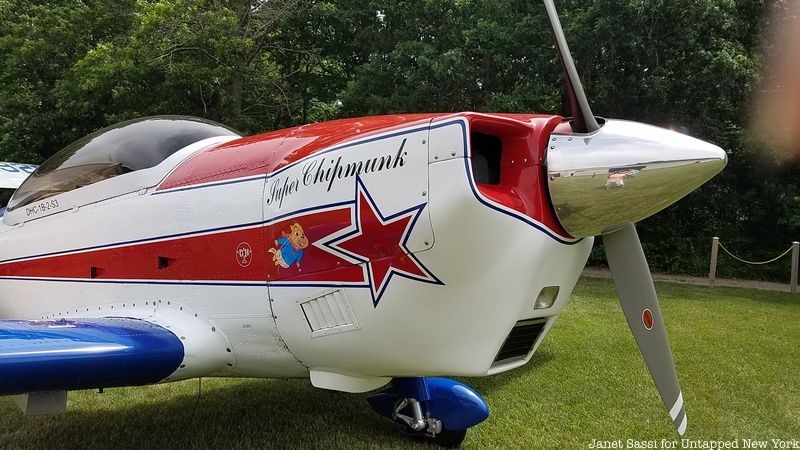
“There’s no control tower here,” says Bob Mott, a licensed pilot and director of the museum, which is located in one of the Aerodrome Society’s 23 hangars. “The Aerodrome is known as an ‘uncontrolled field,’ as are many small airports. It services General Aviation Aircraft, or small, single-engine planes.”
Mott says the field has its own flight pattern for landing, and pilots follow Visual Flight Rules (VFR), which he says is a bit like flying “by the seat of your pants” without instruments found in larger planes. The Bayport Aerodrome’s grass landing strip, a rarity among airports today, attracted the attention of location scouts for the award-winning FX show, “The Americans.” In 2016, the show’s production company rented the field to film a nighttime episode in which an exposed Russian agent is secretly flown out of the country. One of the Society’s members even nabbed a cameo when he offered to fly his V-tail Bonanza plane for the scene.
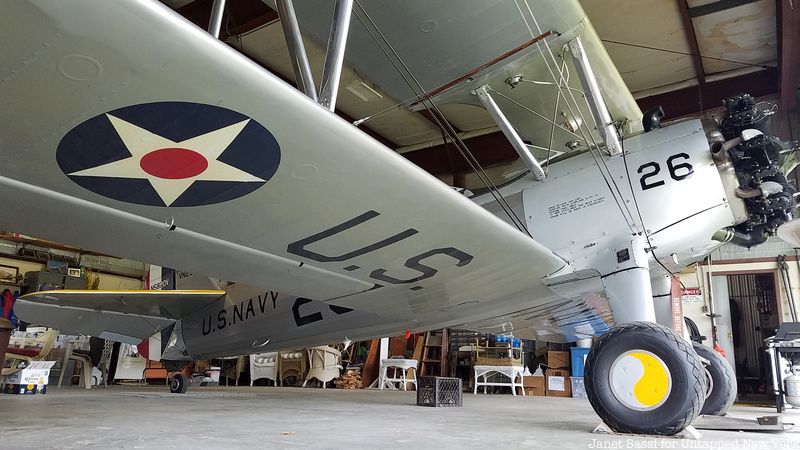
The Bayport Aerodrome, which covers nearly 60 acres, started out as a cornfield belonging to farmer Curtis Davis. When Davis’ son, a World War II Civil Air Patrol pilot, inherited the field, he turned it into an airport and set up commercial operations as well as a flight school. In 1953, Davis sold the property to George Edwards, who ran a flight school at the former Flushing Airport. At one time, the field, known as Edwards Airport, serviced nearly 70 planes and housed a flight school and repair business. “It was your blue-collar-man’s airport,” said Mott.
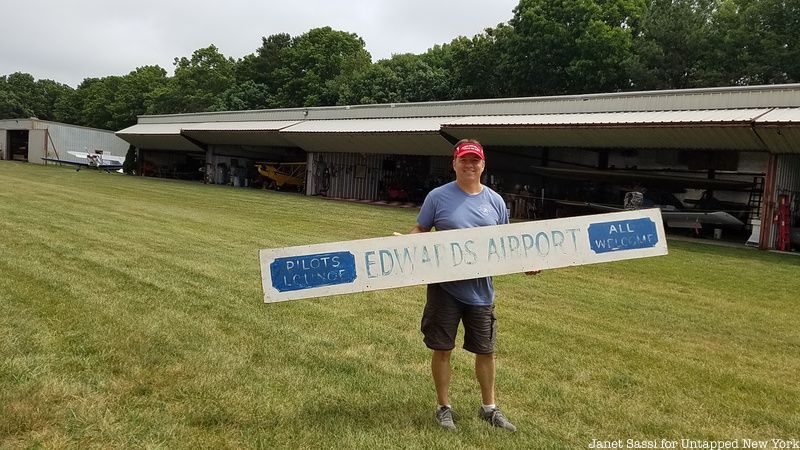
In the 1970s, Edwards sold the property to a development company, which planned to build 138 homes and a waste disposal plant. The Antique Airplane Club of Greater New York began organizing to save the airport and gained support from the surrounding neighborhood. Local protests, as well as some legal challenges from plane owners who held in-perpetuity leases, forced the company’s hand. With the help of Federal Aviation Administration (FAA) funds for airport preservation, the Town of Islip was able to buy the property. It then worked with private plane owners to create the Bayport Aerodrome Society.
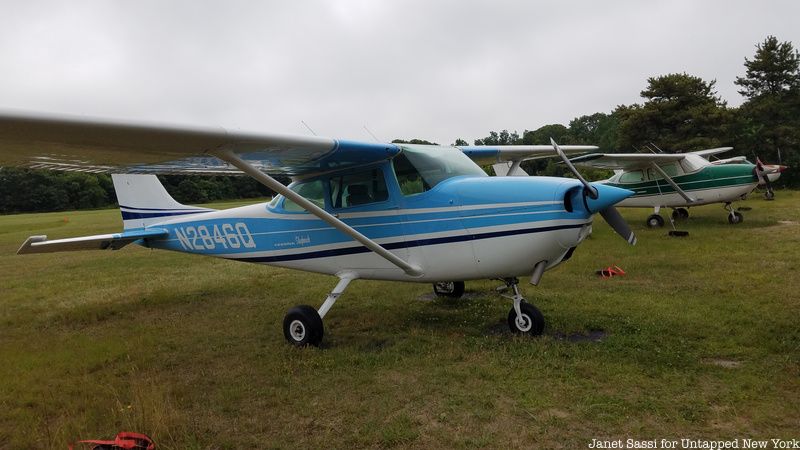
“All those factors came together to save this place,” said Mott. “It was a lucky thing.” Mott recently uncovered the original sign for the Edwards Airport, which had been languishing in another airport hangar for nearly 40 years.
Many of the Society’s members are retired professional pilots, but only one member is a former World War II Naval veteran. Robert Fritts, 94, said his love of flying developed at a young age, when he used to watch the biplanes do aerial maneuvers at the Brooklyn Navy Yard where his father was stationed. “I told myself then I was going to be a Navy fighter pilot,” he says.
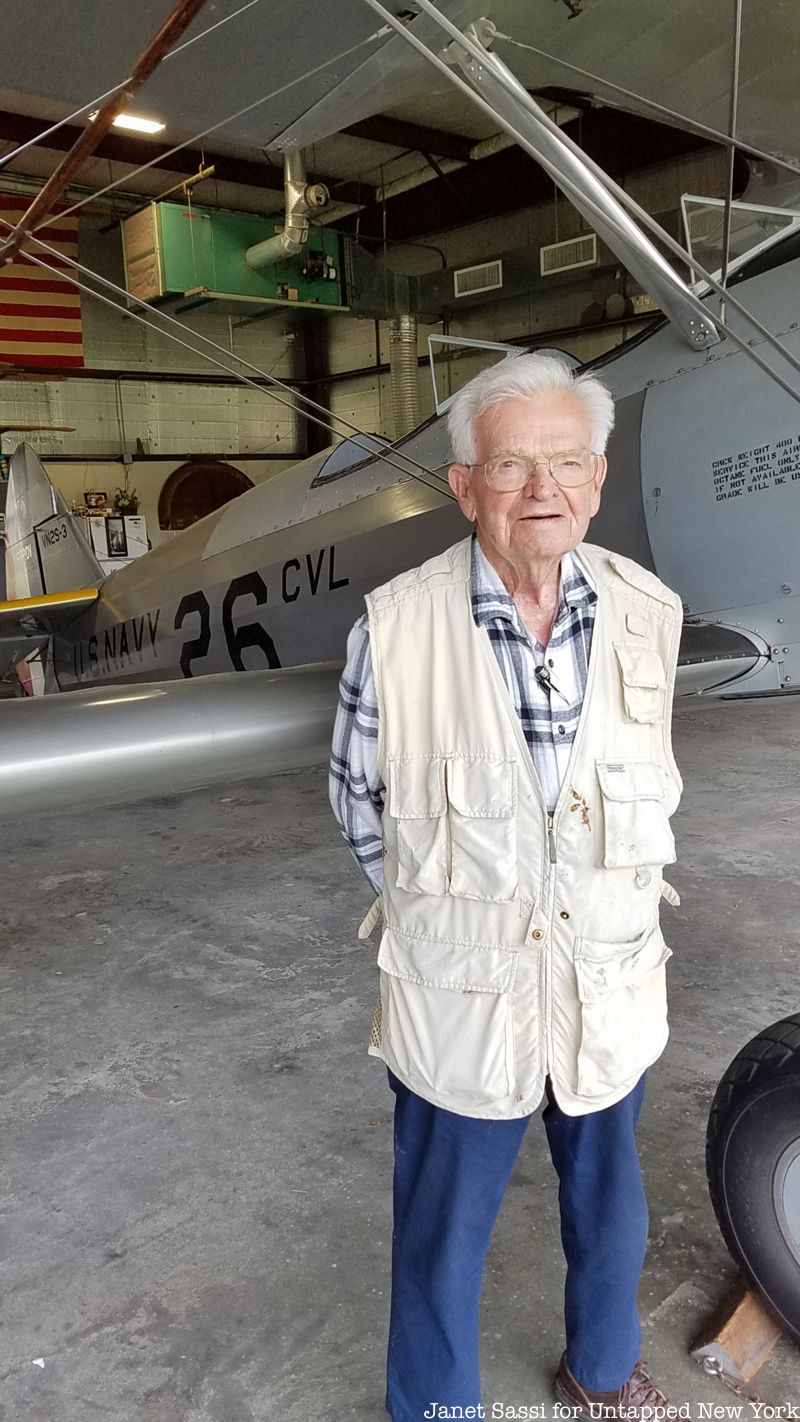
He never achieved his dream while serving, so Fritts earned his pilot’s license after the war. Both he and his late wife were pilots.
Fritts has owned his beloved Stearman biplane — which was once used as a military trainer — for 50 years, during which time he has rebuilt most of it. Although he is no longer able to fly unassisted, he takes to the air with the aid of a grandson, and he is a proud member of ‘Fossil Flyers’, which he describes as a “group of old geezers who still fly.”
Exploring all the hangars yields a beautiful crop of antique planes, including a 1929 Brunner-Winkle Bird with burgundy scalloped patterns , a chrome yellow classic 1940’s Piper Cub, and a 1946 Cessna offering a sleek mirror view from its polished aluminum surface. There’s a fair share of historical paraphernalia to discover on the vast hangar walls, including an old Navy parachuting chair and a variety of vintage posters.
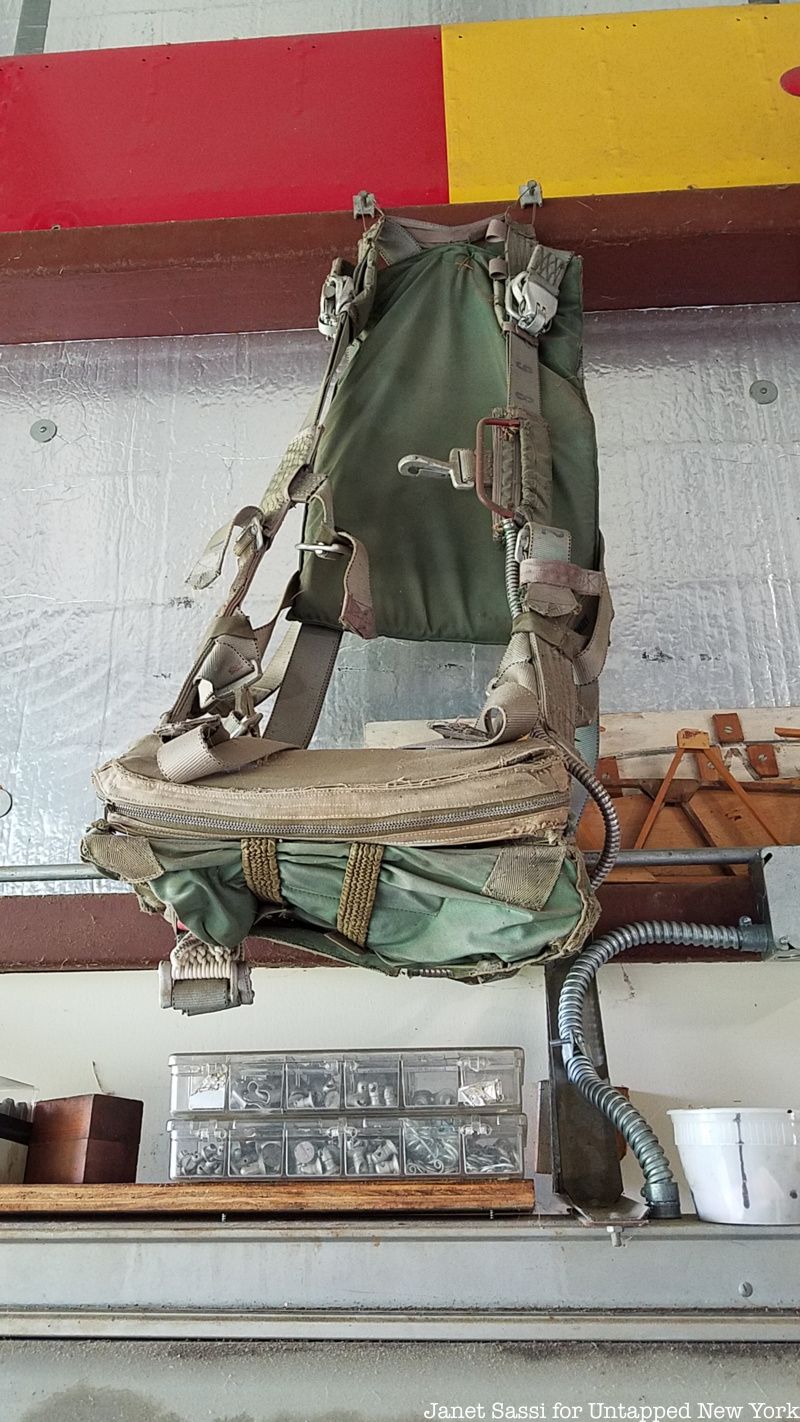
Bayport resident Nick Mercouris, the Society’s newest licensed pilot, got involved after noticing old planes flying over his house. Mercouris has no piloting background but says he’s always wanted to fly. Now he’s certified to take passengers up in his four-seater 1946 Stinson 108-1, “starting with one of my daughters.” “Flying is how I unwind,” he says. The Aerodrome is on the National Register of Historic Places and was added in 2008.
Next, check out the Top 10 Secrets of NYC’s Floyd Bennett Field!
Subscribe to our newsletter